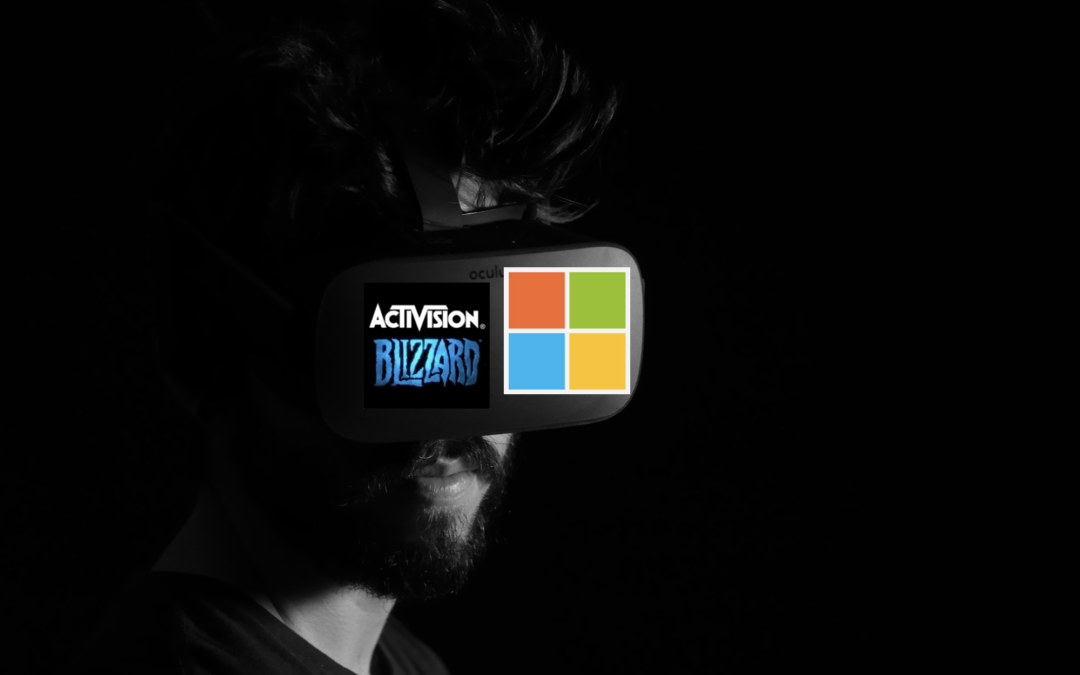
by twieberneit | Apr 27, 2022 | Blog |
This is the third part of my return of the undead series. The first two parts dealt with identifying what components or building blocks a metaverse ecosystem needs to consist of. These components basically define how metaverse can work and serve as a model for the identification of how/where participants in an ecosystem could earn their revenues. Figure 1: The metaverse ecosystem These building blocks are mainly independent of the notion of a(n open) metaverse, as described by Tony Parisi in his article The seven Rules of the Metaverse. They also apply to a more multiverse type world of a collection of closed metaverses – something that I really do not want to call metaverse. The openness, that is necessary for a “metaverse” to thrive can be achieved either by common consent or via regulation – or more likely by a combination thereof. In any case, I believe that some amount of regulation is necessary in order to create and maintain a level playing field and to avoid one or few companies hijacking the area – as this is a platform game and platform games prefer size and allow only few dominant players. Users and creators use front-end applications that enable them to create the and interact with the virtual worlds that are offered. It is here, where the experience happens.These applications run on devices that offer the necessary sensors and actuators.The front-end applications connect to one or more virtual worlds that are provided as a service and that themselves rely on technology platforms.All this gets connected by an infrastructure that includes servers, storage, networks, chips, etc, as well...

by twieberneit | Feb 21, 2022 | Blog |
In the first part of this article, I explained why there is no metaverse (yet), although the idea is around for quite some years. Despite the current hype, it is just a re-emerging topic. Foundational technologies like VR are around since as long as the 50s although VR really entered our minds only in the 90s. The Virtual Reality Modeling Language VRML got standardized in 1994 and its successor X3D in 2004. Half Life with the first highly immersive world was released in 1998. I went into some definition and laid out a framework for a kind of an architecture that can support whatever this idea evolves into, with some emphasis on common standards and some governance. These are necessary, because the metaverse is nothing more than a platform of platforms, which means that at the end of the day it is a kind of a protocol. Or else we will see a collection of (competing) multiverses. I closed with some questions that need to be answered. Why does it need a metaverse, if at all?What are meaningful use cases?Who will rule? Startups? Existing players? Governments? So, let’s dig into it. Why metaverse? Now that the definition work is out of the way, one of the main questions is what the value that a person or organization can expect from being involved in or using “metaverse” is. After all, it is real money that is spent, whereas the whole concept of metaverse is digital and virtual. That raises several interesting questions like: Where is the link between the physical and the digital world, if any? Where is the problem that cannot be solved without the or be...

by twieberneit | Feb 7, 2022 | Blog |
There. Is. No. Metaverse. I am sorry to be a party pooper but read me out. It doesn’t exist. At least not yet. And not for quite some years to come. I am talking of a decade or more. Perhaps not ever. And whence it comes, it probably looks different from what we see now, and we will likely call it by a different name. Does this statement surprise you? I mean, many people, companies and investors are looking at metaverse as being the next big thing. Crunchbase already in November 2021 reported more than $10.6bn being investedinto metaverse related startups. According to a Galaxy report quoted by Institutional Investor, crypto and blockchain startups alone collected more than $32bn in 2021. Microsoft just invested a whopping $70bn in Activision Blizzard, which is clearly a metaverse play. So much money cannot be wrong, right? Google trends also suggests that there is quite some interest in these topics that came up quite recently and quite suddenly, which means that the trend has reached the masses. Figure 1: Google Trends NFT (blue) & Metaverse (red) 01/01/20 – 02/07/22 Last, but not least, “Metaverse” is not a new concept, as it exists since at least 1998 – yes, I am talking about Half Life, the first person shooter game that is often credited with providing a highly immersive world as a first of kind. The first usage of the term itself is credited to Neal Stephenson, who used it in his novel “Snow Crash”. Still: It. Does. Not. Exist. The biggest evidence for there not being a metaverse is that everyone (and their dog) is building one or even claiming...

by twieberneit | Jan 19, 2022 | Analysis, Blog |
The News On January 18, 2022, Microsoft announced the intention to acquire Activision Blizzard with the vision of bringing the joy and community of gaming to everyone, for $95 per share, which equals a transaction value of $68.7 bn. This is a bit more than eight times of the revenue that Activision Blizzards expect to have in the fiscal year 2022. With this acquisition, Microsoft can add 400 million monthly active users to the already existing 25 million Game Pass holders. Until the acquisition closes, the companies will run independently. After completion of the transaction, Activision Blizzard wil report to Phil Spencer, the newly appointed CEO of Microsoft Gaming. This acquisition makes Microsoft the third largest gaming company by revenue, after Tencent and Sony. The stock markets reacted with a sharp increase of Activision Blizzard shares to about $87, while Microsoft stock largely followed its pre-existing slight downward trajectory. Here my analysis in a brief video. The bigger Picture We have currently around 3 billion people and growing, who are actively gaming. Millennials and younger do not even know a world without social media and smart phones. They often play using mobile devices. Microsoft, on the other hand, is available on basically every device and offers quite some hardware, too, either directly or via partners. Additionally, Microsoft already before was a known entity in the gaming market, e.g. owning gaming platforms like Minecraft and Doom. Still, according to Shacknews, Microsoft seems to have missed the own growth targets, even though an increase of Game Pass holders from 18 million to 25 million in the year 2021 is quite significant. Apart from the...

by twieberneit | Dec 31, 2021 | Blog |
It is the end of 2021 and I do not have anything better in mind than writing a last post for the year. So let’s do it. There have been some terms that were used more than others with some of them actually being quite hyped. Some of them for the right reasons, some of them for the wrong ones. My favorites of these terms include in no particular order: MetaverseNFT (non-fungible token)RPA or robotic process automationHyper personalizationHyper automationCustomer Journey OrchestrationLow code / No codeArtificial intelligence / machine learning Hyper personalization I already did a short video that expresses my thoughts on hyperpersonalization. You cannot really avoid the term when browsing the web with anything related to CX in mind. Back in the day, what is now called hyper personalization was called one-to-one marketing. This was in the eighties. The problem was that we didn’t have the technology nor the computing power to technically implement a contextually relevant 1:1 approach at scale and in real time. That’s why we worked with segments. Now we have the technology and computing power to address individuals contextually relevant in real time, nearly regardless of the size of the audience. Technologically, this is quite amazing, and if used consciously is of great benefit for customers and prospects. But there is nothing “hyper” about it. It is still personalization, maybe individualization. My wish for 2022: Let’s do away with the hyperbole before we start to desperately look for the next hyperlative – or should I call it ultralative? Robotic process automation No doubt, RPA is an important technology. It provides a fast and easy – maybe too fast...






